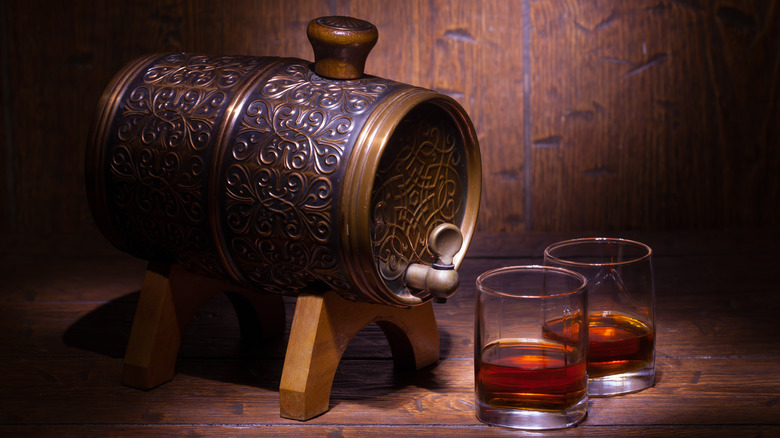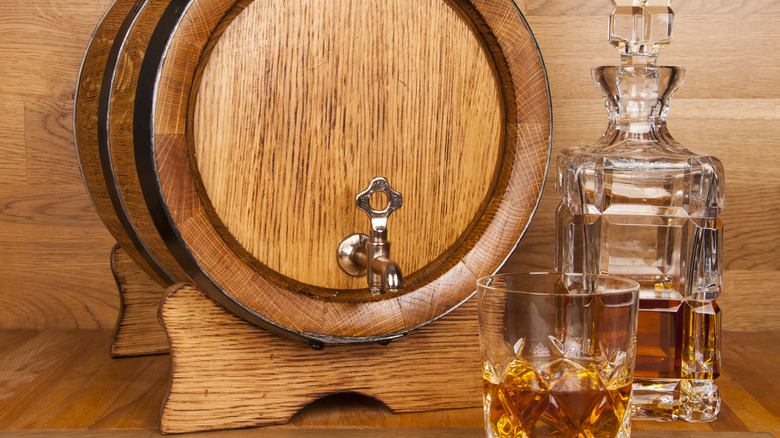A Barrel Aging Kit Is The Expert-Approved Way To Upgrade Cheap Bourbon
Do-it-yourself home distilling has grown in popularity over the past several years and one important result of this trend has been an increase in consumer-focused distilling tools like small wood barrels. According to Chris Blatner, Executive Bourbon Steward, Founder of Urban Bourbonist, LLC, and Executive Director of Bourbon Charity, there's more than one way to use these barrels.
"If you want to get adventurous, buy a small barrel aging kit and further age your bourbon at home," Blatner told us. "Aging it for a few additional days or months can change its character, potentially improving its flavor." The typical way to use barrel aging kits is to age white dog whiskey, which is the clear liquid you get after fermentation but before being placed in barrels. With this method, you're essentially taking over the maturation process for the distillery.
But, there are plenty of bourbons out there that weren't aged properly, especially cheap bourbons. Filling your barrel with cheap bourbon and aging it yourself will help you improve an otherwise mediocre product. Blatner recommends a few days or months, but there are a lot of variables you should consider. For starters, older doesn't necessarily mean better – aging bourbon for too long has the opposite effect of what you'd expect.
Experiment for the perfect flavor blend
Commercial distilleries typically use 200-liter barrels for aging bourbon, but most of us don't have the desire or resources to purchase enough whiskey to fill a barrel that large. Barrel aging kits typically come with a 1 or 2-liter barrel. A smaller barrel means less surface area, but it also means that the surface-to-volume ratio is substantially larger. Some people interpret this to mean that whiskey aged for one year in a small barrel is equivalent to around five years in a large barrel. This interpretation has some merit but is pretty misleading, so take it with a grain of salt. In practice, it means your bourbon will absorb more oak flavors than you might expect or want — at least initially.
The longer you age the bourbon, the more oxidation will occur. While the barrel should be liquid-tight, it isn't air-tight. As the air slowly interacts with the bourbon, it will soften the harsher oak flavors. If you taste the bourbon after a few weeks and discover the oak flavors are too intense, you can try aging it longer to let oxidation correct course. It's counterintuitive, but it works. Another thing to keep in mind is the angel's share. Evaporation will occur while aging, so don't expect as much out as you put in.
One final note: While our understanding of barrel aging is fairly robust for larger barrels, it isn't well-developed for small barrels. There are some helpful resources online, but prepare to experiment.

